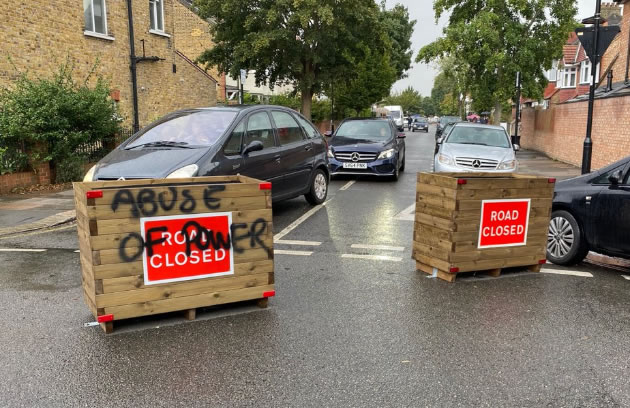LTNs in Ealing Remain an Issue in Local Elections
Candidates differ on how to manage traffic in the area

The LTNs prompted protests before most were removed. Picture: Facebook
|
Local election candidates in Ealing are split over controversial low-traffic zones in the borough.
Since their introduction in Ealing in 2020, Low Traffic Neighbourhoods (LTNs) have proved divisive amongst residents, so much so that seven of the nine brought in were removed just over a year later.
Speaking to the Local Democracy Reporting Service, representatives for the five biggest parties revealed how they would tackle LTNs after 5 May.
According to Peter Mason, leader of the Ealing Labour Party and current leader of the council, the party has learnt its lesson after failing to consult residents on LTNs before their introduction nearly two years ago.
The LTNs at Adrienne Avenue and Deans Road/Montague Avenue would stay but Labour would not introduce any new schemes without asking the public first.
He said, “We’ve made a categorical, cast-iron guarantee that we’re never going to do a scheme in the future ever again, unless we can command the support from residents.”
Ealing’s Conservative Party, however, is firmly opposed to LTNs. Calling them “counterproductive at worst” leader Gregory Stafford said, “What I want to see is proper discussion across the whole borough about how we can all work to reduce pollution and congestion without hammering the motorist, through encouragement rather than punishment.”
The Conservatives have pledged 2,000 new electric car charging points and would consult residents on other ways to reduce pollution in the borough.
The borough’s Liberal Democrats have pledged to re-examine the need for the two LTNs should they be voted in on 5 May, and would not introduce any new measures without consultation from the public.
Leader Gary Malcolm said the party wants to encourage residents to walk and cycle and would fix pavements and make parks more attractive.
The party would also fit more air monitors in the borough to monitor air pollution levels.
Cllr Malcolm said, “[New schemes] will only be implemented if there was a consultation. And that would be done in an open and transparent way.”
For the Ealing Green Party, addressing the climate emergency is central to its manifesto.
Leader Neil Reynolds said: “We’re in a climate emergency, we have to reduce our emissions, and that remains reducing the number of car journeys we make.”
Citing the need to be honest with Ealing’s residents, Reynolds said the Green Party would introduce referendums for traffic-calming measures on roads that have more than 2,000 car movements a day.
It would also introduce air-quality monitoring at every school in the borough, introducing measures to reduce traffic where the pollution levels are too high, and create an environmental budget for the council to help it meet its Net Zero targets.
For the Ealing Independent Network, encouraging people to walk, reducing air pollution and making sure traffic from LTNs isn’t pushed into other neighbourhoods is key.
Representative David Marsden said: “I think people actually are wanting clean streets, they want a better place to live, they want a better deal from the council in terms of development.”
Lisa Haseldine - Local Democracy Reporter
April 14, 2022